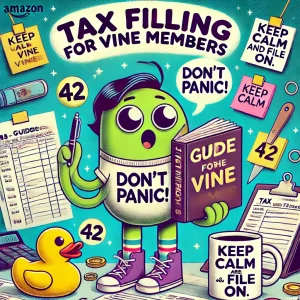An Open Letter to Sellers Using Vine
I understand that giving away 30 or more items for free in exchange for reviews is a significant expense, but your competitors are doing it, and so should you. If you are going to play in this arena, realize that Vine reviewers aren’t stupid. Here are some games NOT to play:
- Skewed Ratings: Vine reviews tend to be in the 4 and 5-star range because Viners select items they actually need and want. We don’t just pick random items to review. My default is a 4-star rating, and if it’s fantastic, it earns a 5. If it’s mediocre, it gets a 3. I’ll address 1 and 2-star reviews later.
- Item Spamming: Don’t flood Vine with 20 or 150 of the same item to cherry-pick reviews and discard negative ones. We see through this, and it doesn’t win you any friends when reviews are written, if anyone orders them at all.
- Review Substitution: Don’t get reviews on one item and then combine or substitute another item for it. Enough stragglers will catch on and ruin your plan. Many reviewers now list the item in the review title to counter this tactic. If caught, expect a 5-star review to flip to 1-star.
- Honesty is Key: Don’t stretch the truth. For instance, when I get batteries, I test them down to a reasonable cutoff voltage and report the actual mAh versus the listed mAh. If you’re within a reasonable range, I’ll call it good. But if the batteries are barely a third of what’s listed, expect a bad review. Honesty yields decent reviews.
- Bad Items Get Bad Reviews: Period. Some reviewers might blindly give 4 and 5 stars, but most take it seriously and call it as they see it. I’m not afraid to give a 1-star review if it’s deserved, and I have given plenty.
- Don’t Hunt Down Viners: Vine has a unique ecosystem. We don’t get warranty repairs or returns. If something is lost in shipping or doesn’t fit, we’re stuck with it for six months before donating it. If packaging is terrible and something is damaged, don’t try to replace it—those messages will be ignored.
- Don’t Report Reviews Out of Spite: Consider reviewers untouchable. Reporting their reviews out of spite will only backfire. Vine Customer Service will see what happened, and you’ll face the consequences. Some sellers have been kicked off Amazon for this. Clean up your product, accept bad reviews, or don’t use Vine.
- No Side Deals: Don’t try to get Viners to review things on the side for money. Vine is the golden goose, and any Viner worth their salt won’t jeopardize that for a gift card or free product outside the program.
- Accurate Sizing: If selling in the US, use US sizing. Different countries have different sizing standards, but if your sizes vary, provide a realistic chart vetted by people of that size.
- Product Options: Don’t limit Vine availability to one option. If you offer a rainbow of options but only brown is available on Vine, or if you only offer one knob, it’s frustrating. To get good reviews, provide enough for practical use. One drawer knob won’t cut it.
- Match Pictures to Products: Ensure your pictures accurately represent the item. With so much to sort through, bad pictures mean I won’t take the time to research it.
The bottom line is, you aren’t buying reviews. You’re getting a select group of people who know how to write decent reviews to take your product into their homes and do a real review. If your product is good, it will be rewarded and help in the algorithm. If it isn’t, it’s probably best not to submit it to Vine.




